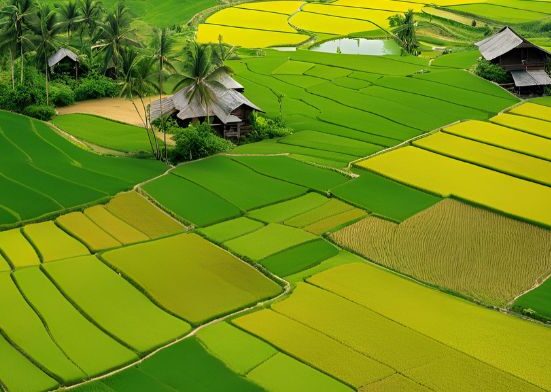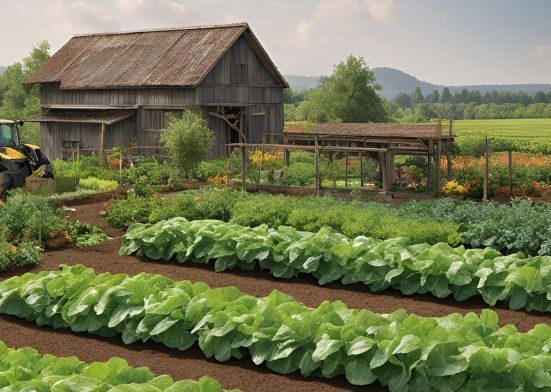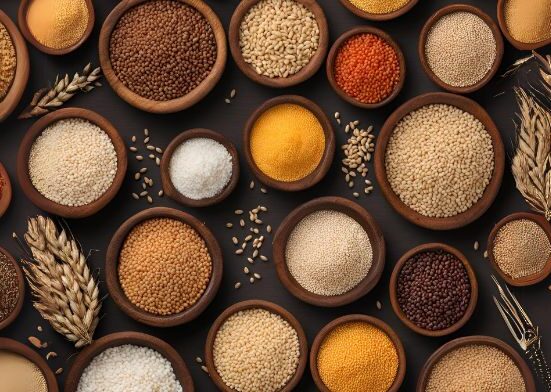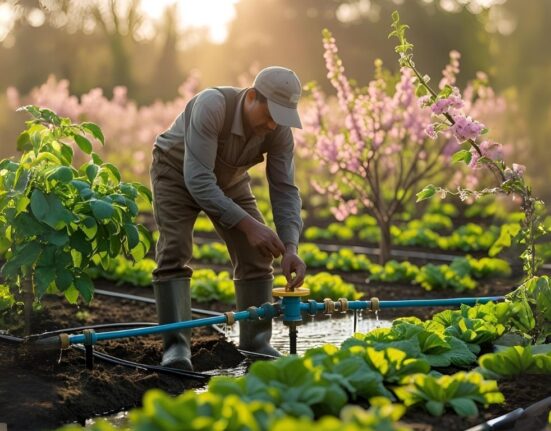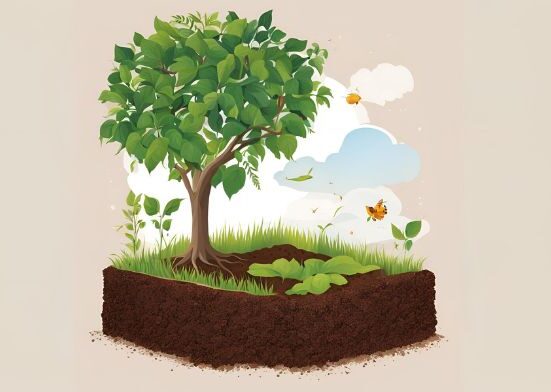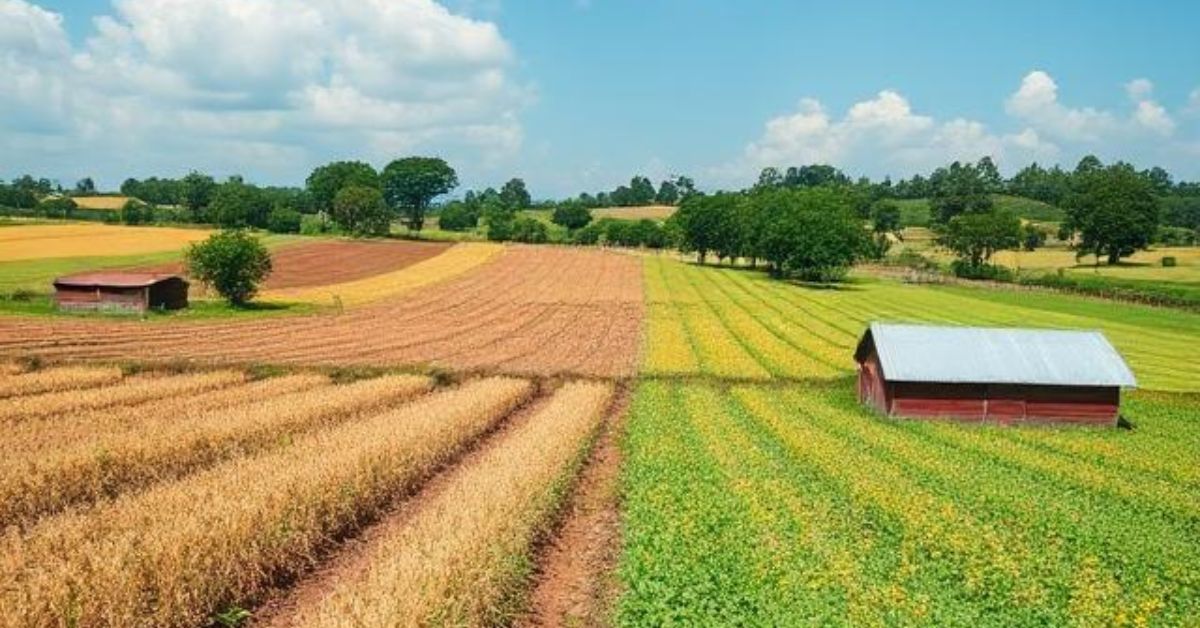Agriculture has been the backbone of human civilization for millennia, evolving to meet the demands of growing populations and changing environmental conditions. Today, two dominant approaches—intensive and extensive agriculture—shape global food production. Each method has distinct characteristics, benefits, and challenges, influencing everything from crop yields to environmental sustainability. The distinctions between comprehensive and intensive are thoroughly examined in this blog post. agriculture, exploring their practices, impacts, and roles in modern food systems. By the end, you’ll clearly understand how these approaches compare and what they mean for the future of farming.
What is Intensive Agriculture?
Intensive agriculture is a high-input, high-output farming system designed to maximize productivity on relatively small land areas. It relies heavily on technology, synthetic fertilizers, pesticides, irrigation, and mechanization to boost crop yields or livestock production. What Is Agriculture This strategy is typical in areas with a high population density, limited land, and the demand for food is high.
Key Features of Intensive Agriculture
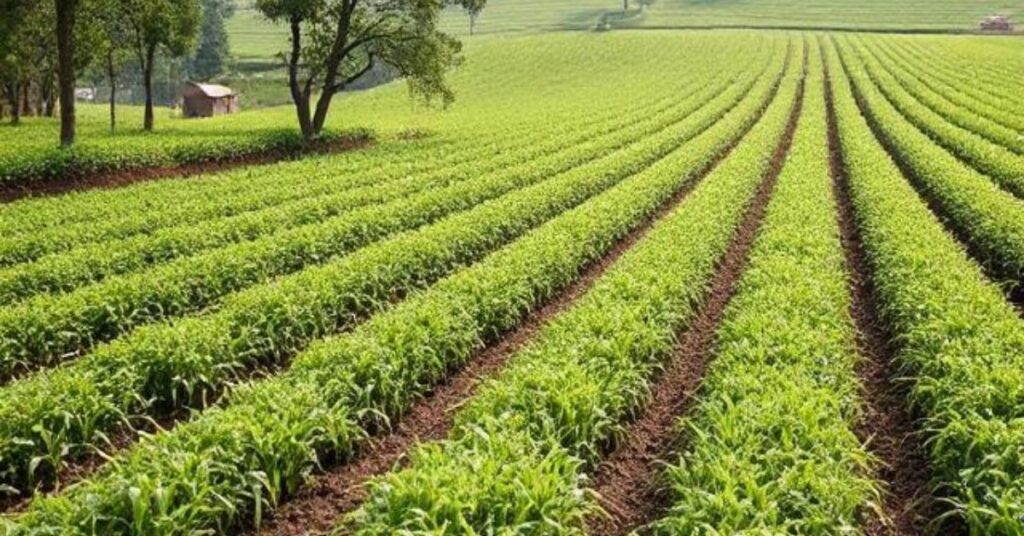
- High Input Use: Intensive farming employs significant amounts of fertilizers, pesticides, and water to enhance soil fertility and protect crops.
- Advanced Technology: Tractors, drones, precision farming tools, and genetically modified organisms (GMOs) are often used to optimize production.
- Small Land Area: Farmers cultivate smaller plots with high crop density or raise large numbers of livestock in confined spaces, such as feedlots or poultry houses.
- High Yields: The primary goal is to produce large quantities of food per unit of land, making it ideal for meeting urban food demands.
- Labor-Intensive or Mechanized: Depending on the region, intensive agriculture may involve significant human labor (e.g., in rice paddies) or heavy mechanization (e.g., in large-scale corn farms).
Examples of Intensive Agriculture
- Crop Production: Rice paddies in Southeast Asia, where multiple crops are grown annually on the same land using irrigation and fertilizers.
- Livestock Farming: Factory farming of poultry, pigs, or dairy cows, where animals are raised in confined spaces with controlled diets.
- Horticulture: Greenhouse vegetable production, where climate control and hydroponics maximize output year-round.
What is Extensive Agriculture?
agriculture extensive , in contrast, is a low-input, low-output system that uses larger land areas with minimal reliance on external inputs. It is typically practiced in regions with abundant land but lower population density, where the focus is on utilizing natural resources rather than intensifying production.
Key Features of Extensive Agriculture
- Low Input Use: Farmers rely on natural soil fertility, rainfall, and traditional methods, with minimal use of fertilizers or pesticides.
- Large Land Area: Extensive farming requires vast tracts of land to produce sufficient yields, as productivity per unit of land is lower.
- Low Yields: The focus is on sustainability and working with natural ecosystems rather than maximizing output.
- Less Mechanization: Extensive systems often use basic tools or animal labor, though some modern operations may incorporate machinery.
- Environmentally Adaptive: Practices are tailored to local conditions, such as nomadic pastoralism in arid regions or ranching in grasslands.
Examples of Extensive Agriculture
- Crop Production: Dryland farming of wheat or barley in semi-arid regions, where crops depend on rainfall rather than irrigation.
- Livestock Farming: Cattle ranching in the Great Plains of the United States or sheep grazing in the Australian outback.
- Shifting Cultivation: Traditional slash-and-burn agriculture in tropical regions, where farmers clear land, grow crops for a few years and move to new areas.
Comparing Intensive and Extensive Agriculture

To understand the trade-offs between these systems, let’s compare them across key dimensions: land use, inputs, productivity, environmental impact, economic viability, and social implications.
Land Use
- Intensive: Requires small, highly managed plots. Land is used continuously with little fallow time, often leading to soil degradation if not appropriately handled.
- Extensive: Spreads over large areas, allowing land to rest or regenerate naturally. However, it can contribute to deforestation or habitat loss if expanded unsustainably.
Intensive agriculture is ideal for regions with limited arable land, such as Japan or the Netherlands, while extensive agriculture suits areas like Australia or Mongolia, intensive vs extensive farming where land is plentiful but less fertile.
Inputs
- Intensive: High reliance on synthetic fertilizers, pesticides, and irrigation. Energy consumption is significant due to mechanization and processing.
- Extensive: Using minimal external inputs, relying on natural processes like rainfall and organic matter. Energy use is lower, but productivity is more vulnerable to weather variability.
The heavy input use in intensive systems raises concerns about resource depletion, while extensive systems are more sustainable but less controllable.
Productivity
- Intensive: Produces high yields per hectare, making it efficient for feeding large populations. For example, intensive rice farming in China can yield 6–8 tons per hectare.
- Extensive: Yields are lower per unit of land. Understanding Food Costs For instance, extensive wheat farming in Australia may yield 1–2 tons per hectare but covers vast areas.
Intensive agriculture’s high productivity comes at the cost of environmental strain, while extensive agriculture sacrifices efficiency for scalability.
Environmental Impact
- Intensive: This can lead to soil erosion, water pollution from runoff, and greenhouse gas emissions from machinery and fertilizers. Monoculture practices reduce biodiversity.
- Extensive: Generally has a lighter environmental footprint but can cause land degradation or deforestation if poorly managed. Overgrazing in extensive livestock systems is a common issue.
Sustainable practices can mitigate these impacts, meaning of extensive farming like crop rotation in intensive systems or rotational grazing in extensive ones.
Economic Viability
- Intensive: High initial costs for inputs, machinery, and technology, but potentially higher profits due to greater output. It’s capital-intensive and suited for commercial farming.
- Extensive: Lower input costs but higher land costs and lower returns per unit area. How Can Farmers Cut Waste in Sustainable Agriculture It’s often practiced by smallholders or in regions with subsidized agriculture.
Intensive farming is more economically viable in high-demand markets, while extensive farming suits areas with low land costs and less market pressure.
Social Implications
- Intensive: This can reduce rural labor needs due to mechanization, leading to urban migration.It also calls into question the morality of factory farming’s treatment of animals.
- Extensive: Supports traditional lifestyles, such as nomadic herding, but may struggle to compete in global markets, affecting rural livelihoods.
Both systems influence rural communities differently, intensive agriculture vs extensive agriculture with intensive agriculture driving modernization and extensive agriculture preserving cultural practices.
Advantages and Disadvantages
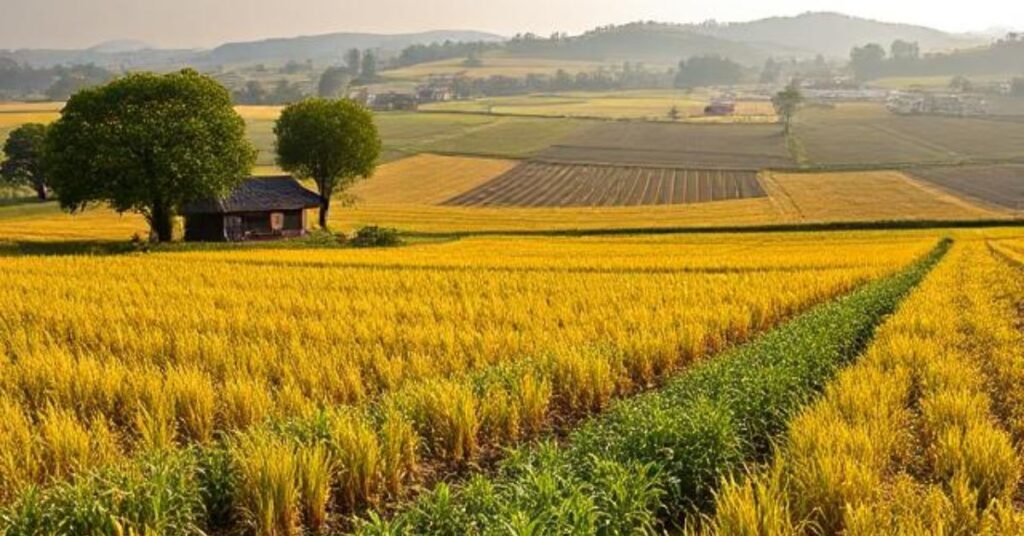
Intensive Agriculture
Advantages:
- High food production to meet urban demands.
- Efficient use of limited land.
- Supports technological innovation and economies of scale.
Disadvantages:
- Environmental degradation (e.g., soil depletion, water pollution).
- High energy and resource consumption.
- Ethical concerns in livestock confinement.
Extensive Agriculture
Advantages:
- Lower environmental impact when managed sustainably.
- Preserve traditional farming practices and Saltwater Farming ecosystems.
- Less dependence on costly inputs.
Disadvantages:
- Lower yields limit food security contributions.
- Vulnerable to climate variability and market fluctuations.
- Large land requirements can conflict with conservation goals.
Technology’s Function in Closing the Gap
Modern technology is blurring the lines between intensive and extensive agriculture, creating hybrid systems that combine the best of both worlds. For example:
- Precision Agriculture: GPS-guided equipment and sensors allow extensive farmers to optimize inputs, increasing yields without heavy intensification.
- Agroecology: To reduce environmental harm, What Are Cash Crops intensive farmers adopt sustainable practices, like cover cropping or integrated pest management.
- Vertical Farming: An ultra-intensive approach that uses minimal land and controlled environments to produce crops year-round.
- Regenerative Agriculture: Combines extensive principles (e.g., soil health) with intensive techniques (e.g., crop rotation) to restore ecosystems while maintaining productivity.
These innovations suggest that the future of agriculture may not be a choice between intensive and extensive but a fusion of their strengths.
Global Context and Regional Variations
The choice between intensive and extensive agriculture often depends on geography, climate, and economic conditions:
- Asia: Intensive agriculture dominates in countries like India and Vietnam, where population density and food demand are high.
- Africa: Extensive systems, such as pastoralism, are standard in arid regions, but intensive farming is growing in peri-urban areas.
- North America: The U.S. combines intensive row-crop farming (e.g., corn, soybeans) with extensive cattle ranching.
- Europe: Intensive farming is widespread, but policies like the EU’s Common Agricultural Policy promote sustainable extensive practices.
Global trade also influences these systems. Intensive agriculture often serves export markets, while extensive agriculture supports local or niche markets, such as organic beef.
Challenges for the Future
Both systems face significant challenges as the world grapples with climate change, population growth, and resource scarcity:
- Climate Change: Intensive agriculture must reduce emissions and adapt to changing weather patterns, while extensive systems need resilience against droughts and floods.
- Food Security: Intensive agriculture will remain critical for providing food for an estimated 10 billion people by 2050, However, advanced systems can but extensive systems can diversify food sources.
- Sustainability: Both systems must adopt practices that preserve soil, water, and biodiversity for long-term viability.
Policymakers, farmers, and consumers all play a role in shaping the future. Incentives for sustainable practices, technological investment, and informed consumer choices can drive positive change.
Conclusion
Intensive and extensive agriculture represent two ends of the farming spectrum, each with unique strengths and challenges. Intensive agriculture excels at producing large quantities of food on limited land but often at a high environmental cost. Extensive agriculture is more sustainable and culturally significant but struggles to meet global food demands. As technology and sustainable practices evolve, the distinction between these systems is fading, paving the way for innovative approaches that balance productivity, environmental health, and social equity.
The future of agriculture lies in learning from both systems—leveraging the efficiency of intensive methods and the ecological wisdom of extensive ones. By understanding their differences and synergies, we can create a food chain that sustains the earth and keeps it healthy for future generations.
FAQ
What is the main difference between intensive and extensive agriculture?
Intensive agriculture uses high inputs (fertilizers, technology, labor) on small land areas to maximize yields, while extensive agriculture relies on low inputs and large land areas, producing lower yields per unit but utilizing natural resources.
Which is better for the environment?
Extensive agriculture generally has a lighter environmental footprint due to lower input use, but it can cause land degradation if mismanaged. Intensive agriculture often leads to soil depletion and pollution but can be sustainable with practices like crop rotation or precision farming.
Where is intensive agriculture most common?
Intensive agriculture is prevalent in densely populated regions with limited land, such as Southeast Asia (e.g., rice paddies), Europe (e.g., greenhouse farming), and parts of North America (e.g., factory farming).
Can extensive agriculture feed a growing global population?
Extensive agriculture’s lower yields make it less suited to meet large-scale food demands compared to intensive systems. However, it can contribute to food security in regions with abundant land and support sustainable practices.
How is technology changing these farming systems?
Technology is bridging the gap between the two systems. Precision agriculture enhances extensive farming efficiency, while sustainable practices like agroecology reduce the environmental impact of intensive farming, creating hybrid approaches.


